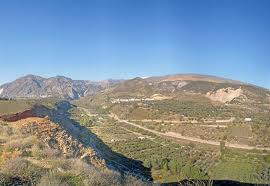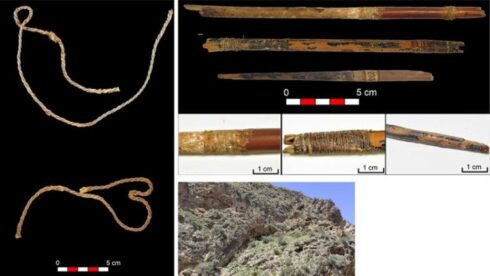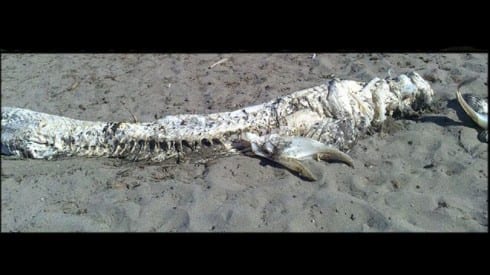IT is 35 degrees but we are still taking afternoon tea in one of the most unusual shops in southern Spain.
Around the Arabian wood table at The Camel Stop – a true cornucopia of collectibles – sit no less than five nationalities and a Scouser, the man from Liverpool being no less
than left wing comedian Alexei Sayle himself.
With the conversation drifting from the topic of overbuilding to fine art degrees, this can only be inland Andalucia.
And for those not fancying a massive hike on windy roads deep into the interior, the Lecrin Valley could be just about your perfect spot.
Just 25 minutes to the coast and 25 minutes to the city of Granada, this dramatic area, literally translated as the ‘Happy Valley’, is a wonderful place for a break, or even to
live.
“It’s certainly very convenient for us,” explains Sayle, who has just returned after a three year absence to the home he and his wife bought over a decade ago.
On a buying trip for a few ornaments (including a bargain figurine of elephant god Ganesh), he waxes lyrical about the area’s ancient water courses that bring cold waterfrom the Sierra Nevada, as well as his spacious home, which counts a swimming pool, 12 orange trees, cactus and bougainvillea.
“The history of the area and its stunning countryside are a major draw,” he says. “It really is an exciting and vivid place.”
There is certainly something special about the enclave, which sits between Granada city and the coast at Motril.
Comprising a wealth of pretty villages and charming countryside, it is little surprise to learn that other notables have properties here, including Teletubbies creator Andrew
Davenport, music producer Youth, formerly of Killing Joke, and George Michael’s publisher Dick Leahy.
“The area attracts some rather strange, but interesting people,” explains painter James Connell, who has worked from a studio near Albuñelas for the last decade.
“They are certainly infinitely more interesting than the cocktail party set on the Costa del Sol with all those nationalistic enclaves.”
It is easy to see why.
Scattered with lemon, orange and almond trees, this beautiful area has been little affected by tourism.
If you are looking for a cultural hub with bright lights, concerts and Michelin-starred restaurants then look again.
The Lecrin valley is what you think of when you conjure up traditional images of the sun-drenched south of Spain; rolling countryside and sleepy villages where sheep and goats are herded through narrow streets.
It offers a complete escape from the pressures of modern living. Situated in the foothills of the Sierra Nevada, many of the 17 tiny villages seem to literally blend into each other.
Going hand in hand with this, you will be hard pressed to find people who speak English.
Of course, this time warp is made all the more fascinating by the fact that the valley really is only 25 minutes from the centre of Granada.Where this becomes apparent is in the history of the valley, which is dotted with ruined Arabic castles and look-out towers.
Travelling south from Granada in the 7th Century the Moors chanced upon this fertile land and named it El Valle de Lecrín – the Valley of Happiness.
But its history was not always happy. It was actually here where Boabdil, the last King of the Nazrids, moved after being forced out of the city of Granada after signing the Declaration of Surrender, handing his beloved city over to the Catholic Monarchs.
Appropriately, the last view of the city before descending into the Valle de Lecrín is from the Puerto del Suspiro del Moro (The Pass of the Moor’s Sigh).
It garners its name, legend has it, as being the spot where the king broke down in tears as he took one last glance back at the city. And his mother famously commented: “Weep then like a woman, over that which you could not defend like a man.”
Later the valley became a battleground in the bloody Morisco uprising due to its strategically important position as the only southerly access route to Granada and the only point of entry to the Western Alpujarras.Yet today the only hint of the devastation that swept through the valley is in the ruins – the most famous being those of Lecrín Castle where the kings and queens of Granada
were buried. It is believed that the last burial was of Moraima, the wife of Boabdil, who died in Cádiar as they were preparing to leave for exile in Africa.
Now, walking around the many villages the indelible mark of the Moors remains in names and architecture but the valley has slipped into a peaceful slumber. Nowhere is this more apparent than in Niguelas, where it was still quiet at 9.30am when I strolled through the lovely village and up into the mountains above it, where a track leads literally alongside a burbling brook and up to the snowy peaks in the far distance.
Of course like any given day in summer the town’s locals had been up late, enjoying the cool of the evenings.And even when they finally wake up from their slumber by the time I am coming down there is still something peaceful about the place that is filled with the aroma of oranges and lemons.
It has once again become a Valley of Happiness and it is no surprise that so many people have come here to create their own idyll.











